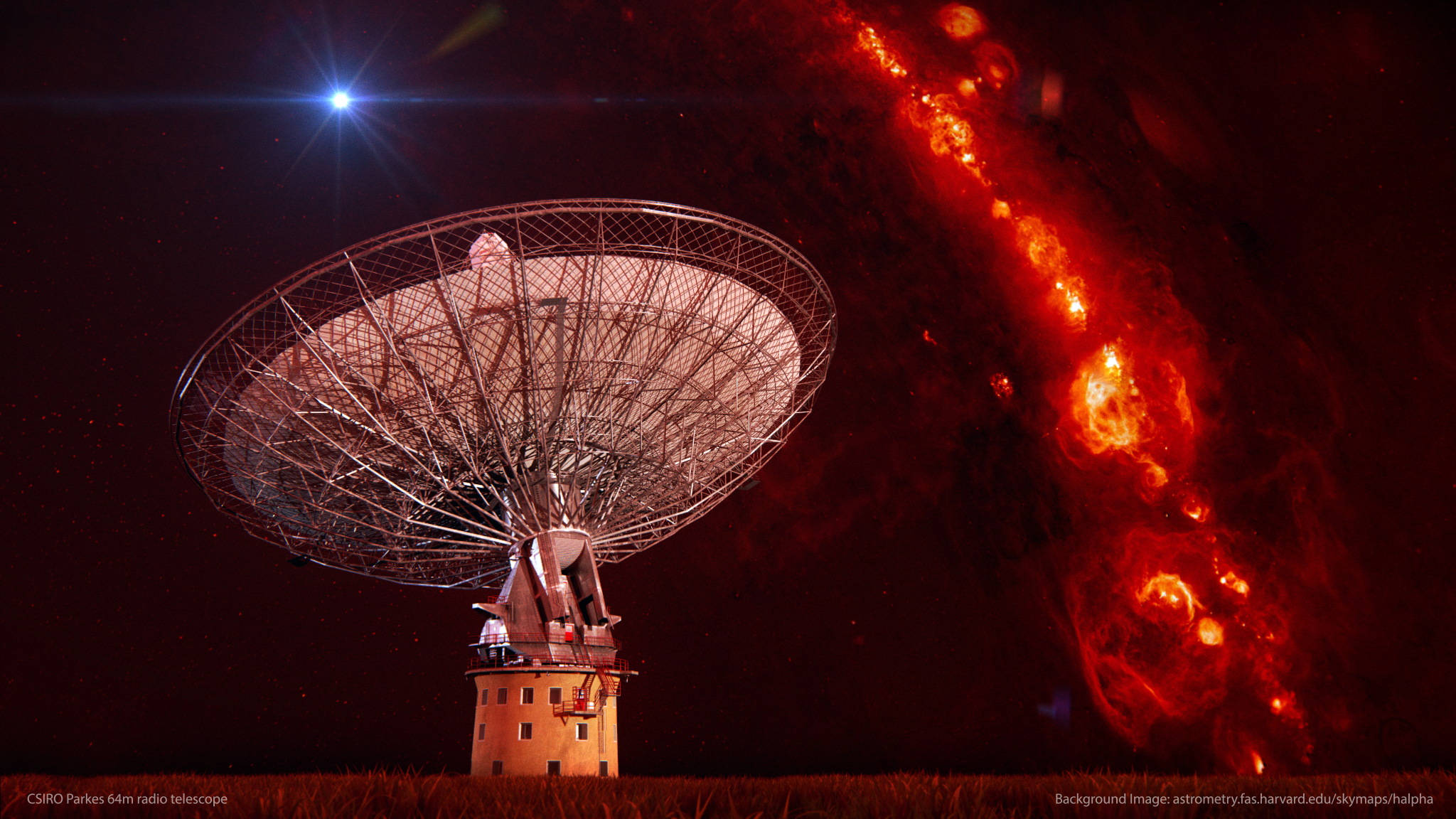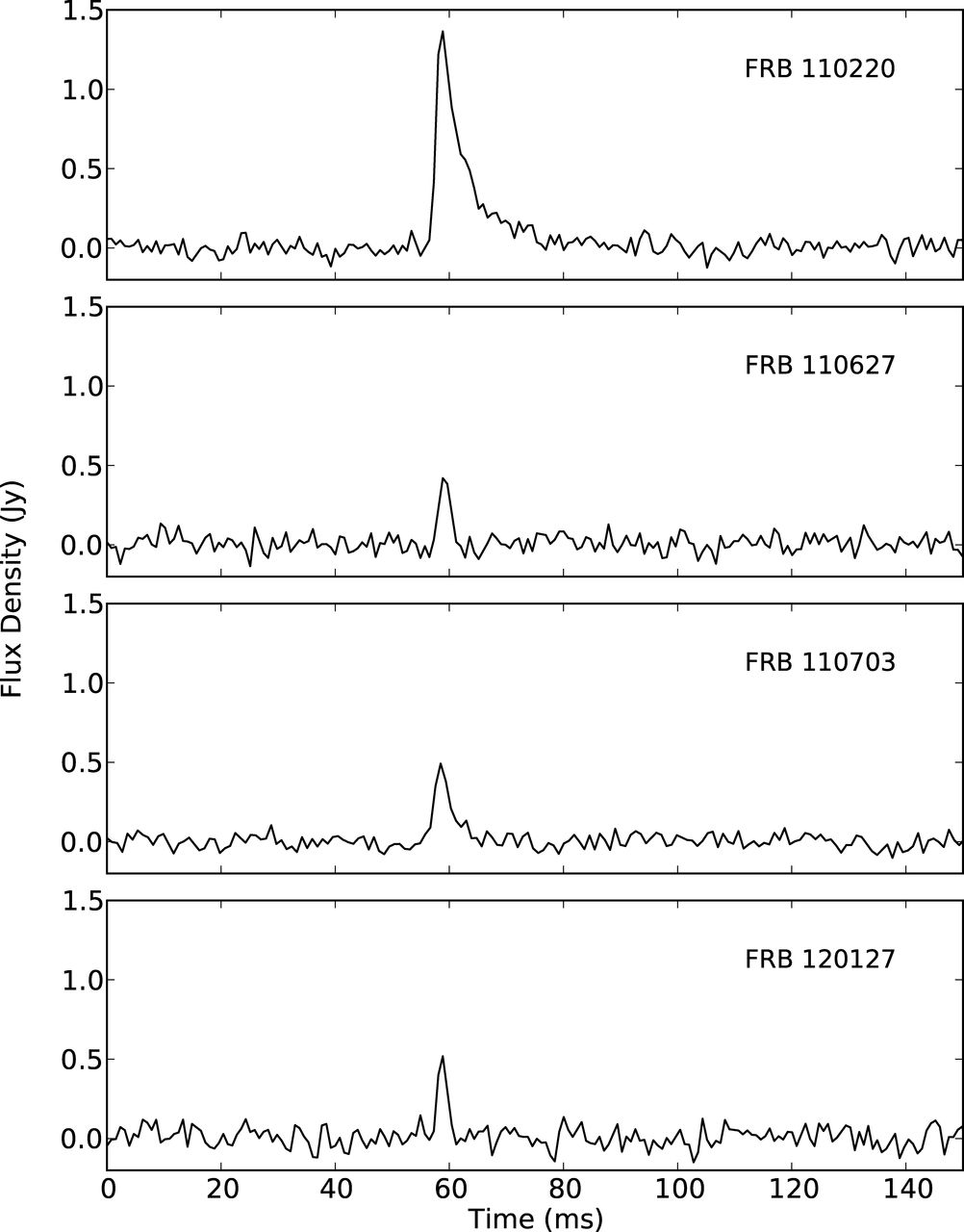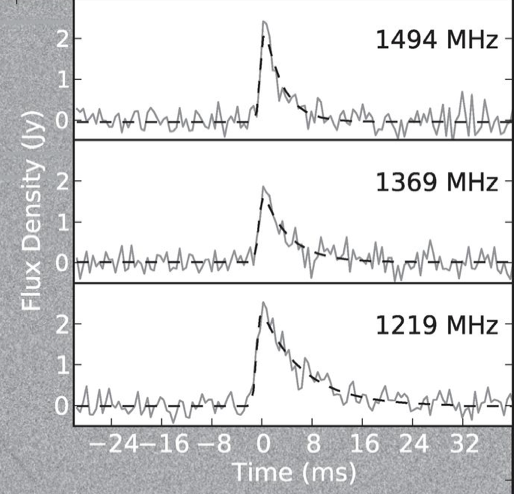Found with Parkes: radio ‘bursts’ from the distant Universe. The red background in this visualisation is gas in our galaxy. Credit: Swinburne Astronomy Productions, vr.swin.edu.au
In the journal Science today, astronomers using our Parkes telescope have revealed signs of cataclysms in the distant Universe.
They’ve found four ‘bursts’ or ‘flashes’ of radio waves, the furthest one coming from about 11 billion light-years away. And, they say, if you had ‘radio eyes’ — eyes that could detect radio waves — you’d see one of these ‘bursts’ going off somewhere in the sky every ten seconds. It would be like a continuous show of distant fireworks.
What is a ‘burst’? It’s a spike in the radio energy the telescope receives. Here, from the Science paper, is what the astronomers found. (‘Flux density’ means signal strength.)
‘FRB’ stands for Fast Radio Burst. Because they really are very fast, lasting for only a couple of milliseconds.
The speed of the bursts, their strength, and other characteristics of the radio signal, all help to show what the bursts are — or rather, what they are not.
Each burst has a range of radio frequencies, not just a single one. Here, for instance, is one of the bursts (FRB 110220) at different frequencies:
Those curves are slightly different. At 1219 MHz, the energy from the burst is arriving just a bit later on Earth than it is at 1494 MHz.
This is what happens when a radio signal travels through space and interacts with charged particles — electrons — hanging around in space (even the space between the galaxies). The radio waves at lower frequencies get slowed down more than the ones at higher frequencies, so they reach us later.
And the further the radio waves travel, the greater the difference in the ‘slowing down’. That is how the astronomers worked out that the radio bursts they’ve found have come from the distant Universe.
So, what caused the bursts?
The astronomers have ruled out:
- radio interference from man-made sources on Earth — because of the frequency dispersion discussed above
- atmospheric phenomena — again, because of the frequency dispersion
- ordinary pulsars — because we can detect those only fairly nearby, in our Galaxy and a couple of neighbouring galaxies
- gamma-ray bursts — because no gamma-ray emission was detected at the same time as the radio bursts
- mergers of neutron stars — because these wouldn’t happen often enough to give the expected rate of the bursts
- mergers of black holes — again, this is not thought to happen often enough
- evaporating black holes — these wouldn’t emit enough energy.
So what could the bursts be? In their Science paper, the astronomers speculate that perhaps a core-collapse supernova could interact with an orbiting neutron star to produce the short, sharp, screams of radio waves they observe. But we don’t actually know.
How exciting!
Publication
D. Thornton, B. Stappers, M. Bailes, B. Barsdell, S. Bates, N. D. R. Bhat, M. Burgay, S. Burke-Spolaor, D. J. Champion, P. Coster, N. D’Amico, A. Jameson, S. Johnston, M. Keith, M. Kramer, L. Levin, S. Milia, C. Ng, A. Possenti and W. van Straten. A Population of Fast Radio Bursts at Cosmological Distances. Science (5 July 2013) Vol. 341 no. 6141 pp. 53-56. DOI: 10.1126/science.1236789





5th July 2013 at 4:38 pm
Reblogged this on News @ CSIRO and commented:
Some exciting news from ‘The Dish’ today.